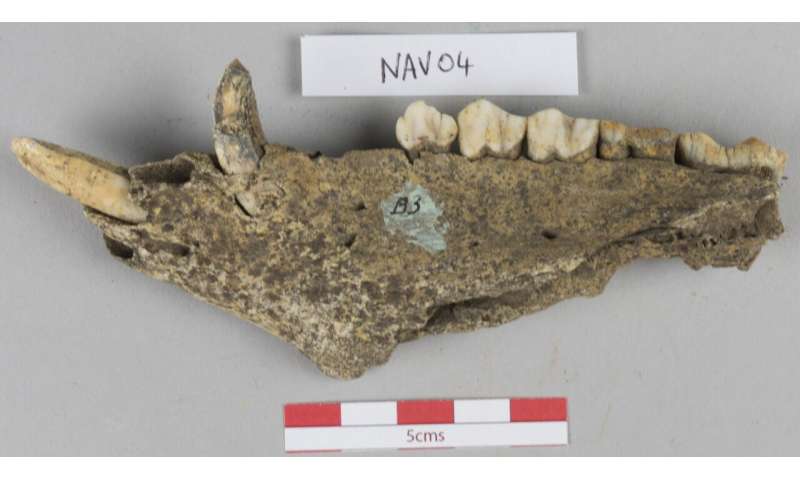One of the analysed pig jaws for the study. Credit: Dr Richard Madgwick
People transported animals over huge distances for mass gatherings at one of Ireland's most iconic archaeological sites, research concludes.
Dr. Richard Madgwick of Cardiff University led the study, which analysed the bones of 35 animals excavated from Navan Fort, the legendary capital of Ulster. Researchers from Queen's University Belfast, Memorial University Newfoundland and the British Geological Survey were also involved in the research.
The site had long been considered a centre for ritual gatherings, as excavations found a huge 40m diameter building and a barbary ape cranium, likely from at least as far as Iberia. Results suggest the pigs, cattle and sheep were brought from across Ireland, perhaps being reared as far afield as Galway, Donegal, Down, Tyrone and Antrim. Evidence suggests some were brought over more than 100 miles.
Dr. Madgwick, based in Cardiff University's School of History, Archaeology and Religion, said: "Our results provide clear evidence that communities in Iron Age Ireland were very mobile and that livestock were also moved over greater distances than was previously thought.
Read the rest of this article...

No comments:
Post a Comment